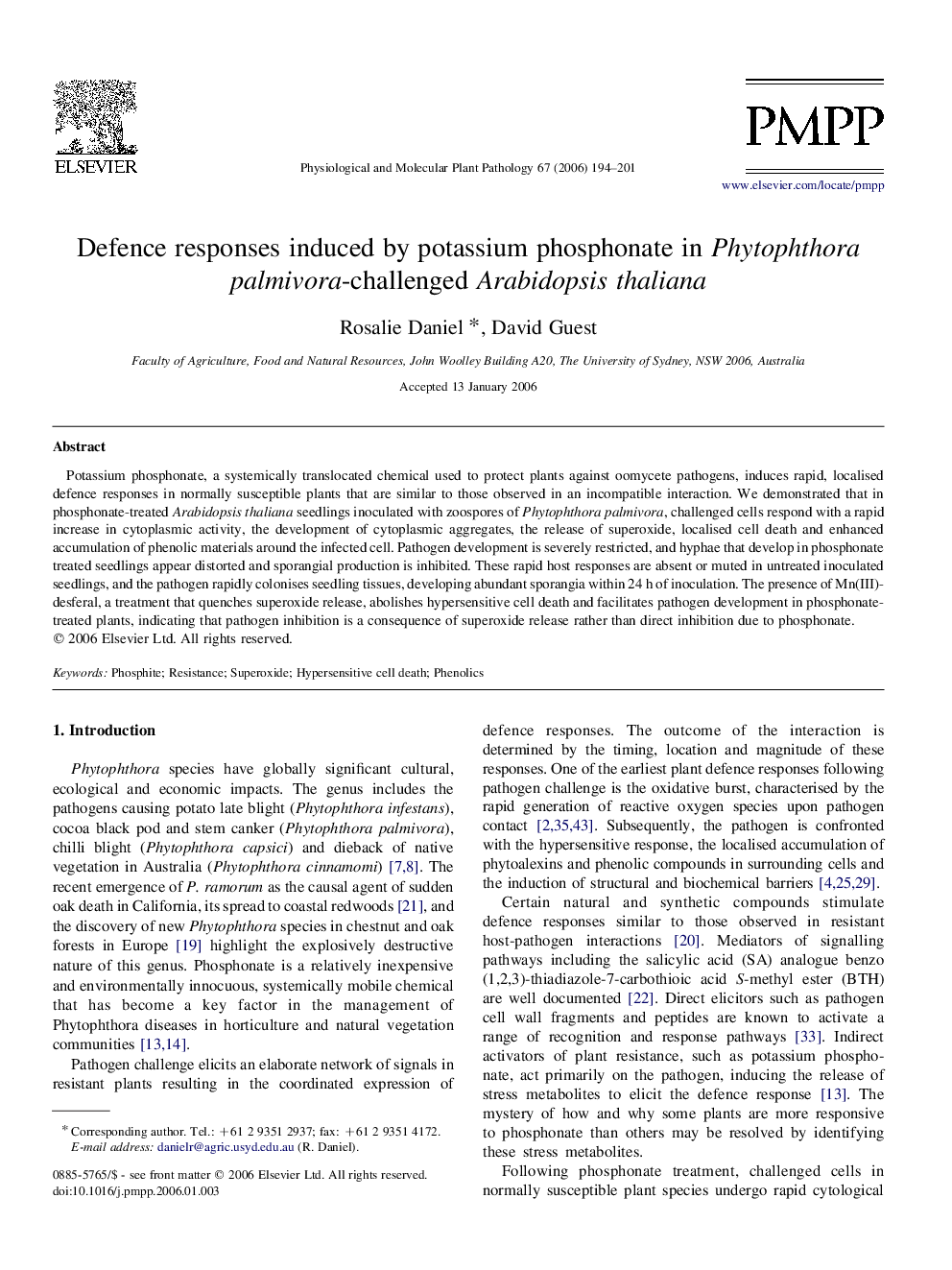| Article ID | Journal | Published Year | Pages | File Type |
|---|---|---|---|---|
| 2836842 | Physiological and Molecular Plant Pathology | 2006 | 8 Pages |
Potassium phosphonate, a systemically translocated chemical used to protect plants against oomycete pathogens, induces rapid, localised defence responses in normally susceptible plants that are similar to those observed in an incompatible interaction. We demonstrated that in phosphonate-treated Arabidopsis thaliana seedlings inoculated with zoospores of Phytophthora palmivora, challenged cells respond with a rapid increase in cytoplasmic activity, the development of cytoplasmic aggregates, the release of superoxide, localised cell death and enhanced accumulation of phenolic materials around the infected cell. Pathogen development is severely restricted, and hyphae that develop in phosphonate treated seedlings appear distorted and sporangial production is inhibited. These rapid host responses are absent or muted in untreated inoculated seedlings, and the pathogen rapidly colonises seedling tissues, developing abundant sporangia within 24 h of inoculation. The presence of Mn(III)-desferal, a treatment that quenches superoxide release, abolishes hypersensitive cell death and facilitates pathogen development in phosphonate-treated plants, indicating that pathogen inhibition is a consequence of superoxide release rather than direct inhibition due to phosphonate.
